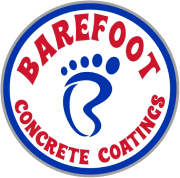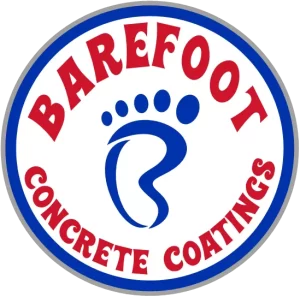Concrete floors are known for their durability and strength, making them popular in various spaces, including homes, offices, and industrial buildings. However, concrete is not immune to wear and tear like any other material. Over time, it can develop cracks and chips that compromise its integrity and longevity.
Dealing with cracked concrete floors can be a significant problem for any homeowner. Not only do concrete floor cracks look unsightly, but they can also lead to more severe structural issues if left untreated. Understanding what causes cracks in concrete floors is essential to take the necessary preventive measures and promptly address any damage.
Top Causes of Cracks and Chips in Concrete Floors
1. Poor Installation
One of the primary causes of cracks in concrete floors is poor installation. When the concrete is not mixed correctly, it can result in a weak and uneven surface. Additionally, if the floor is not adequately cured or if shortcuts are taken during construction, it can lead to cracks and other damages.
To prevent this, hiring experienced professionals who follow industry best practices for concrete installation is crucial. Investing in quality work upfront can save you from the hassle and expense of repairing cracks and chips in floor concrete coating in the future.
2. Settlement
Cracks in concrete floors can also occur due to settlement. This happens when the ground beneath the floor compresses or shifts, causing the concrete to move and crack. Settlement can be caused by various factors, including:
a. Soil Erosion
Soil erosion, particularly in areas with poor drainage, can lead to soil loss beneath the concrete floor. When this happens, the floor lacks proper support, making it prone to settlement and cracking. To prevent this, it’s essential to address any drainage issues promptly and ensure that the soil is adequately compacted before the floor is constructed.
b. Poor Soil Preparation
Inadequate soil preparation is another factor that can contribute to cracks in concrete floors. If the soil is not adequately compacted or contains organic materials that can decompose over time, it can result in uneven settling and floor cracking. To mitigate this risk, it’s essential to conduct thorough soil testing and prepare the site according to the recommendations of the construction engineer.
c. Plumbing Leaks
Plumbing leaks can cause significant damage to concrete floors. When water seeps into the ground, it can erode the soil and weaken the foundation, leading to settlement and cracking in the affected areas. To prevent this, it’s important to promptly address plumbing leaks and regularly inspect the pipes, especially those near the concrete floor.
3. Overloading
Overloading, or placing excessive weight on a concrete floor beyond its intended capacity, can result in concrete floor cracks and structural damage. This is particularly common in industrial settings where heavy machinery and equipment are used.
To avoid this, it’s crucial to adhere to the floor’s weight limitations and ensure that a structural engineer assesses any changes in equipment or machinery. Reinforcing the concrete or using load-distributing measures in high-stress areas can also help prevent cracks and chips in floor concrete coating.
4. Temperature Changes
Concrete is sensitive to temperature changes, and extreme variations can cause it to expand and contract, leading to cracks in the floor. This is a common issue in regions with significant temperature fluctuations.
To minimize the risk of concrete floor cracks due to temperature changes, several measures can be taken, including:
a. Proper Insulation
Proper insulation can help maintain more consistent temperatures, reducing the stress on the concrete and minimizing the potential for cracks. This is particularly important in areas where temperature control is critical, such as cold storage facilities.
b. Control Joints
Control joints, also known as expansion joints, are deliberate gaps or weakened areas in the concrete floor. They allow the material to expand and contract without causing significant cracks and chips in floor concrete coating. Including control joints in the initial floor design can help mitigate the risk of temperature-related cracking.
c. Avoiding Direct Sunlight
Avoiding direct sunlight can minimize the risk of temperature-related cracks in concrete floors. UV rays can heat the surface unevenly, causing rapid expansion and potential cracking. Using shading devices or reflective coatings can help protect the floor and reduce the impact of solar radiation.
d. Installing a Chip Floor Concrete Coating
To hide imperfections while adding a stylistic appearance to one’s floor, a chip concrete floor can be installed. A chip concrete floor consists of multiple layers to create a decorative yet durable finish to one’s concrete floor. Chip concrete floor coatings are generally low maintenance and customizable.
Chip floor concrete coatings combine colored chips or flakes made of materials like vinyl or other composite materials to add a unique appearance that resembles a granite or terrazzo-like surface. By installing a chip floor concrete coating, minor blemishes will not be noticeable on the floor, and the overall durability of the chip concrete floor will be significantly enhanced.
5. Moisture and Water Damage
Moisture is a significant enemy of concrete floors. Its presence can lead to various types of damage, including cracks. Here are a few ways moisture can compromise the integrity of a concrete floor:
a. Poor Drainage
When moisture accumulates on the floor due to poor drainage, it can seep into the concrete, weakening it and causing cracks. Regular floor inspections should be conducted to prevent this, and any drainage issues should be addressed promptly.
b. Flooding
Flooding poses a severe risk to concrete floors. The prolonged exposure to water can cause them to deteriorate, resulting in cracks and chips in the concrete floor. Taking preventive measures, such as installing flood barriers and maintaining a functioning drainage system, is crucial to protect the floor from potential harm.
c. High Humidity
High humidity levels can also contribute to cracks in concrete floors. When the air is saturated with moisture, it can penetrate the concrete, weakening its structure. Effective moisture barriers, such as sealants, should be used to mitigate this risk when constructing the floor.
6. Wear and Tear
Like any other surface, concrete floors are susceptible to wear and tear. However, in the case of concrete floors, this can lead to more than just aesthetic issues. The following factors can contribute to concrete floor cracks and damage:
a. Abrasive Particles
Abrasive particles, such as sand and grit, can act like sandpaper. They can wear away the protective layer of the floor, causing cracks and chips in the concrete floor. Regular sweeping and mopping should be done using materials that do not scratch the floor to prevent this.
b. Heavy Traffic
Heavy traffic on the floor can accelerate its deterioration and increase the risk of concrete floor cracks. In areas prone to significant footfall, such as entrances and corridors, using durable floor coverings or implementing protective measures, such as mats, can help minimize the potential for wear and damage.
One can also have a chip floor concrete coating installed. As mentioned above, this type of multi-layer flooring system is used to provide an attractive, durable, and seamless finish to concrete floors. A chip concrete floor adds aesthetic appeal and also helps hide imperfections in the concrete.
c. Lack of Maintenance
A lack of maintenance can also contribute to cracks in concrete floors. When routine care, such as cleaning and inspections, is neglected, minor issues, such as surface defects, go unnoticed and can worsen over time, resulting in more significant cracks and chips in concrete floors. Regular maintenance should be performed to avoid this, and any identified problems should be addressed immediately.
Key Takeaway
Chips and cracks in concrete floors can be caused by natural settling and shrinkage, excessive moisture, poor floor design, heavy loads and impact, temperature changes, and insufficient floor maintenance. It is essential to address these factors effectively and implement suitable preventive measures to prevent these chips and cracks.
Concrete floors are a significant investment, and their longevity depends on your preventive measures. By addressing the causes mentioned above and implementing the recommended solutions, you can minimize the risk of cracks and damage, ensuring that your concrete floor remains in excellent condition for years to come.
Protect your concrete floor from chips and cracks!
If you want to add extra protection to your concrete floor, a high-quality polyaspartic coating in Alpine, UT is your best bet. It can safeguard your floor against various threats, including chips and cracks. Contact Barefoot Concrete Coatings to learn more about our services!



